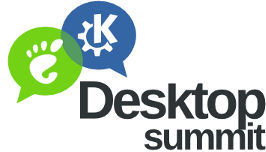Open Source Visualization of Scientific Data

Dr. Marcus D. Hanwell joined Kitware in 2009, working in scientific visualization. He received his B.Sc. and Ph.D. in Physics from the University of Sheffield (UK) in 2003 and 2007, respectively. He spent a summer in Silicon Valley at a startup company in 2002, and participated in the Google Summer of Code program in 2007, as a student, and in 2008- 2010, as a mentor.
After graduating from the University of Sheffield in 2007, Marcus completed a post-doctoral fellowship at the University of Pittsburgh in the department of chemistry. His Ph.D. and post-doctoral work involved experimental and computational research, concerned primarily with the electrical and structural characteristics of nanomaterials. He has presented his research at local, national and international conferences.
As computational power increases, scientists are able to run larger and more accurate simulations. This is creating siginificant challenges in scientific research as the amount of data produced increases, previous analysis techniques become less useful. Worse still, if common formats cannot be agreed upon getting the output of one code into a suitable analysis tool can be difficult. This is where open source tools present a strong alternative to traditional software models.
This talk introduces some of the open source technology developed by Kitware, and the open source communities that collaborate on these tools and frameworks. Recent advances in open source scientific visualization will be discussed, going from smaller chemical data sets such as those that can be analyzed by Avogadro, through to very large data sets visualized by the Visualization Toolkit and ParaView. The talk will examine current challenges in visualizing scientific data, new efforts to produce common infrastructure to help scientists and how open collaboration platforms are a key component in cutting edge research.
The adoption of the Avogadro library by Kalzium will be discussed, and how we might encourage further collaboration between academics and the KDE community. The modularzation of VTK will be discussed, and how developers can use VTK in KDE applications to use advanced visualization techniques such as volume rendering, isosurfaces, contours, 3D interaction widgets, informatics and 2D charts along with an overview of the pipeline mechanism used to build up complex visualizations.




















